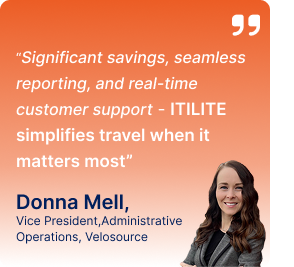
Corporate cards are a great way to empower employees and simplify expense tracking, but they come with risks if spending is not controlled. A staggering demonstrates how uncontrolled employee spending on corporate cards can quickly get out of hand. While most employees have good intentions, it only takes one case of overspending or fraud to result in significant losses. The key is to find the right balance between convenience, flexibility, and oversight when managing corporate card programs.
Setting clear employee spending limits and policies is crucial. This ensures employees understand the company’s expenses while allowing your finance team to monitor spending effectively. Get it right, and your company can enjoy all the benefits of corporate cards with minimal risk. This article will explore tips on how finance leaders can implement smart corporate card controls to enable spending while optimizing oversight.
Why Control Employee Spending?
Controlling spending is critical to prevent overspending and fraud. When employees make purchases on corporate cards, it can be tempting to buy more than necessary if limits aren’t set. Employees may use the cards without oversight for personal purchases, unauthorized travel, entertainment expenses, etc. This can add up quickly, leading to unexpected costs for the company. Setting clear employee spending limits helps rein this in.
Establishing and enforcing limits ensures employees only spend what they genuinely need for work purposes. It deters fraud by clarifying what charges are acceptable versus prohibited on the cards. Employees will think twice about buying something extravagant or non-essential if they know it’s outside the allowed limit. Controls make them accountable for all purchases and how funds are spent. This protects the company from misuse of corporate cards that can damage the bottom line. Oversight of employee spending ultimately reduces financial risks and prevents issues down the road.
Set Clear Employee Spending Limits
When setting spending limits on corporate cards, it’s essential to categorize employees and set customized limits based on their roles and expected expenses. Here are some tips for setting clear spending limits:
- Categorize employees into groups like executives, middle managers, engineers, etc. Employees in senior or client-facing roles may have higher spending needs than junior employees.
- Analyze historical spending data to determine appropriate spending limits for each employee group. This ensures the limits are grounded in actual spending patterns.
- Set hard limits on categories prone to overspending, like meals, travel, entertainment, etc. Configure the corporate card system to decline charges that exceed category limits automatically.
- Allow higher limits or no pre-set limits for necessary but variable expenses like office supplies, business travel, etc. But require manager approval for charges above a threshold.
- Establish one-time or temporary limit increases when employees have special business needs like conferences, offsites, etc. Set an expiration date for the higher limit.
- Communicate the customized spending limits during the card activation process. Ensure employees understand the limits and restrictions.
Setting tailored, category-specific limits helps control employee spending while providing flexibility. Proactively communicating the limits sets proper expectations with employees.
Enforce Limits
Setting employee spending limits on corporate cards is an essential first step, but the limits must be enforced consistently to be effective. Automating the flagging of suspicious transactions that exceed preset limits takes the burden off managers having to review every expense manually.
With automated systems, any problematic charge based on the amount or merchant is flagged immediately. The employee can then be required to provide an explanation or documentation for that purchase before it is approved. The transaction can be rejected and not reimbursed without adequate justification.
Automated enforcement ensures every employee is held to the same standards without the risk of favoritism. It also facilitates quick identification and investigation of potential policy violations without combing through every expense. Proactively flagging transactions that appear suspicious deters employees from improperly using corporate cards. Automating enforcement is crucial for companies to exercise proper oversight over spending limits.
Educate Employees
It’s crucial to properly educate employees on spending policies and limits from day one. Have employees read and sign the corporate card policy so everything is clear. Clearly explain what types of expenses are allowed or prohibited. Inform employees on the review and audit process and the repercussions for violating policies like revoking card privileges or facing disciplinary action.
Training helps prevent issues by setting clear expectations. Employees should understand that corporate cards are for business purposes only, not personal purchases. Give examples of acceptable and unacceptable uses to eliminate gray areas. Encourage employees to ask questions if they need clarification on whether a purchase adheres to policies. Ongoing training and open communication create a culture of accountability and responsible spending.
Review Regularly
You should review the spending limits you have set regularly, such as quarterly. Review the actual spending of each employee during the period to see if any adjustments need to be made.
Some employees may consistently spend under their limits, which could indicate that their limits are too high and could be reduced. Others may be going over the set limits frequently, suggesting the boundaries need to be increased.
The goal is to align the spending limits with actual employee spending patterns. If limits are too low, it restricts employees unnecessarily. If limits are too high, it increases the risk of overspending occurring.
You can find the right balance by adjusting the spending limits regularly based on accurate employee cost data. This helps employee spending limits serve their purpose of controlling spending without being overly restrictive.
Audit Transactions
It’s important to periodically audit employee transactions on corporate cards to catch any potential policy violations. Here are some things to look out for when auditing:
- Large purchases from unauthorized merchant categories like jewelry, electronics, etc. These likely fall outside policy guidelines.
- Cash advances and ATM withdrawals. Most policies prohibit these.
- Purchases made on weekends, holidays, or outside regular working hours. This could indicate personal spending.
- Multiple smaller purchases from the same vendor in a short timeframe. Here, employees may be splitting transactions to avoid limits.
- Extremely large restaurant bills. This could indicate personal entertainment rather than a business meal.
- Missing receipts: Lack of documentation makes it impossible to confirm legitimate spending.
- Reimbursements to employees may indicate they put personal spending on the card.
- Any other transactions that seem unusual or don’t match standard business spending patterns.
Ensure Employee Spending Limits with ITILITE
Setting clear employee spending limits on corporate cards is crucial to controlling expenses. Throughout this blog, we covered why retaining employee spending is essential, how to set appropriate limits, enforce them consistently, educate employees, regularly review limits, audit transactions, and address issues promptly. This protects the company from overspending and abuse while empowering employees and managers with guidance and transparency.
If your organization also wants to control employee spending, look no further than ITILITE. ITILITE is a SaaS-based corporate travel management company that helps organizations make business travel seamless with its state-of-the-art features. Moreover, with ITILITE corporate card, you can control employee spending and get 1.5% cashback on all purchases.
To know more about our corporate card, get a free demo now!













